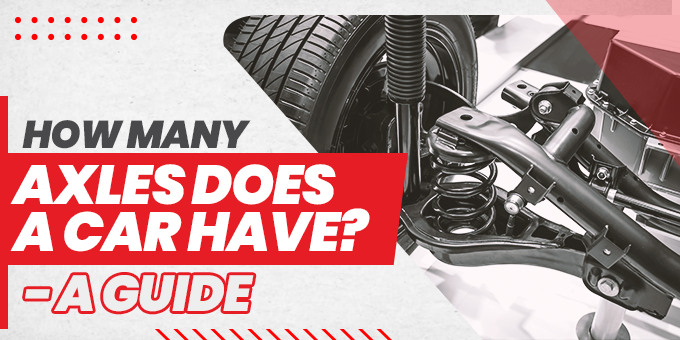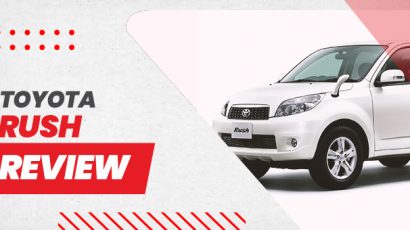
Not many people are interested in the mechanical working of vehicles. When a car moves, your thought should immediately go towards the axle. But, the different car parts and their importance are often overlooked factors.
Most people are only concerned with the most popular or stylish-looking cars. If you develop some understanding of the parts, you will be better able to find your dream vehicle. Let’s find out how many axles does a car have and the different types of axles.
What Is An Axle?
An axle is a central shaft that rotates the wheels. In the simplest of words, a metal rod that connects two wheels is the axle. It creates the wheelset. Over the years, the design of the axle has improved significantly to serve various purposes.
Moreover, a perfectly working axle will ensure that the wheels work smoothly. Axles can vary in number, but you will not find any vehicle without an axle.
How Many Axles Does A Car Have?
Cars mostly have two axles. And this fact also holds true for trucks. As a general rule of thumb, there is one axle for each pair of wheels. Most vehicles on the road are 2-axle vehicles.
Some larger vehicles that have more passenger capacity and wheels may have more axles. You can find out the number of axles in a car by looking at it from the side and counting the pairs of tires. Two sets of tires equal two axles. Some examples of 2 axle-vehicles are tricycles, bicycles, motorcycles, light trucks, and some medium-duty trucks.
What Factors Determine The Types Of the Axle In A Car
The type of axle in a car is determined by various factors. It depends on the mechanical requirements of the vehicle as well as the amount of force produced. Some vehicles have a standard pre-designed axle, while others may have a customized axle to fit specific vehicle requirements.
Customized axles perform better as there is more personalized control over the wheels to adjust the speed and torque.
Types of Axles
There are three standard types of axles. These are as follows:
Rear Axle
The rear axle comes in two halves called half shafts. It is responsible for powering the driving wheels. The differential connects the half shafts. It means they move with the wheels.
Front Axle
As evident by the name, the front axle is found in the front of the vehicle. It provides assistance with steering and shock processing from uneven roads. The axle includes the beam, swivel pin, track road, and stub axle. The front axle should be as strong as possible, which is why most of them are made of carbon or nickel steel.
Stub Axle
The stub axle supports the front wheels of the vehicle. This axle is attached with kingpins connecting it to the front axle.
Types of Rear Axles
Rear axles aren’t all the same; their support and mounting methodology determine the nature of the rear axles that are fitted in used cars for sale in Japan. Following are the types of rear axles available for cars:
Semi-Floating Axle
This type of rear axle is used to securely hold the exterior of the axle shaft. It connects the wheel to the flange and has two bearings. Semi-floating axles are used in cars, mid-size trucks, and SUVs. They need to be bigger than other options so that they can produce the same torque.
Full-Floating Axle
The full floating rear axle uses two bearings to maintain its position as it effectively floats in its place. It is primarily used to transfer driving torque. These types of rear axles perform best in larger vehicles or those with larger towing capacities.
Three-Quarter Floating Axle
This is the most reliable kind of rear axle as well as the most complex. It facilitates the maintenance of wheel alignment and driving torque with side thrust.
Types of Front Axle
The two kinds of front axles are as follows:
Live Front Axle
The main purpose of the live front axle is to power the wheels at the front from the gearbox.
Dead Front Axle
A dead front axle is a type of front axle that doesn’t rotate with the wheels. They usually have housing saving them water or dirt.
Types of Stub Axle
There are four types of stub axle that you should be aware of:
Elliot
An Elliot stub axle connects to the front axle through a kingpin, cotter, and yoke.
Reverse Elliot
A reverse Elliot is opposite to an Elliot stub axle.
Lamoine
This is an L-shaped spindle as opposed to a yoke-type hinge.
Reverse Lamoine
Its layout is opposite to a standard Lamoine stub axle.
Possible Axle Issues
There are various things to consider to have the right axle ratio. These include the following:
1. You can’t compare the optional axle ratios from different automakers. The final figure is influenced by the system gear, which is affected by the various tire sizes.
2. The fuel economy data for a standard axle ratio is reflected on the window sticker of the vehicle. The fuel economy for a custom axle ratio option will always be lower.
3. Lower axle ratios are called tall gears by dealers and reflect better gas mileage, while higher axle ratios are called short gears and can haul heavier loads.
How To Deduce If The Axle Is In Poor Shape
An axle is an integral component of your vehicle that affects its performance. Its optimal functioning is important for driving. However, some signs signify a problem with the axle that needs immediate attention. You should take prompt action when you witness the following:
1. There is a noticeable sound as you put shift gears
2. You feel vibrations while driving the car
3. It does not move forward or backward, even if it’s running
Delaying to take notice of these signs can lead to serious repercussions.
End Note
The axle is vital to a fully-functioning vehicle. If it breaks, it can lead to loss of control, and the associated wheels will lose power. Such an event can be fatal to your life and happens only in case of collision or serious neglect.
Even if you feel the slightest sign that something is not fine with the axle, you should visit a trusted mechanic. A thorough vehicle inspection will reveal whether it’s time to replace the axle or a part replacement will fix the issue. The rear axle is made of metal. Hence it is relatively cheap. The cost can be around $150 for a replacement rear axle.
However, the total cost of replacing an axle depends on the vehicle’s type, make, model, and year. It can roughly cost you between $500 and $1000, excluding labor costs. If your vehicle undergoes regular maintenance, then most things will remain functional for longer. It also helps save extensive repair and maintenance costs in the future.
Please read this blog if you want to learn more about car engine parts.











